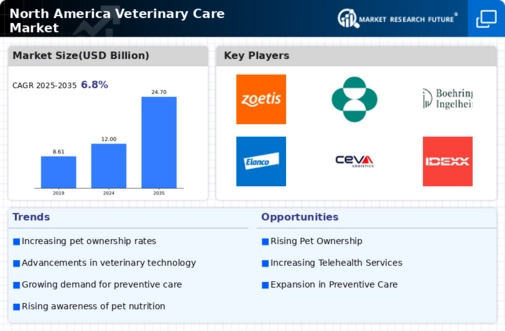North America Veterinary Care Market Summary
The North America Veterinary Care market is projected to grow from 12.0 USD Billion in 2024 to 24.7 USD Billion by 2035.
Key Market Trends & Highlights
North America Veterinary Care Key Trends and Highlights
- The market is expected to experience a compound annual growth rate of 6.8 percent from 2025 to 2035.
- By 2035, the North America Veterinary Care market is anticipated to reach a valuation of 24.7 USD Billion.
- In 2024, the market is valued at 12.0 USD Billion, indicating a robust growth trajectory.
- Growing adoption of advanced veterinary technologies due to increasing pet ownership is a major market driver.
Market Size & Forecast
| 2024 Market Size | 12.0 (USD Billion) |
| 2035 Market Size | 24.7 (USD Billion) |
| CAGR (2025-2035) | 6.8% |
Major Players
Zoetis (US), Merck (US), Boehringer Ingelheim (Germany), Elanco (US), Ceva (France), Phibro Animal Health Corporation (US), Virbac SA (France), IDEXX Laboratories, Inc. (US), Neogen Corporation (US), Heska Corporation (US)







